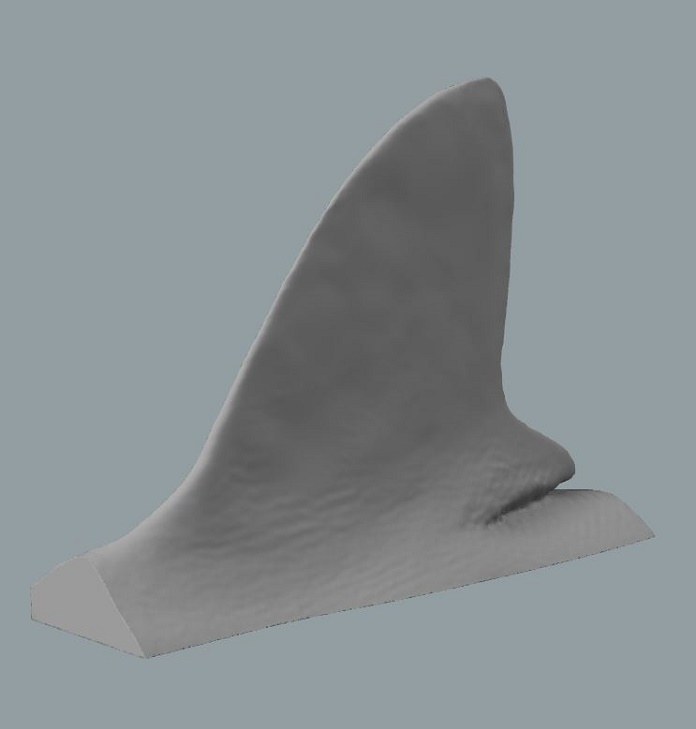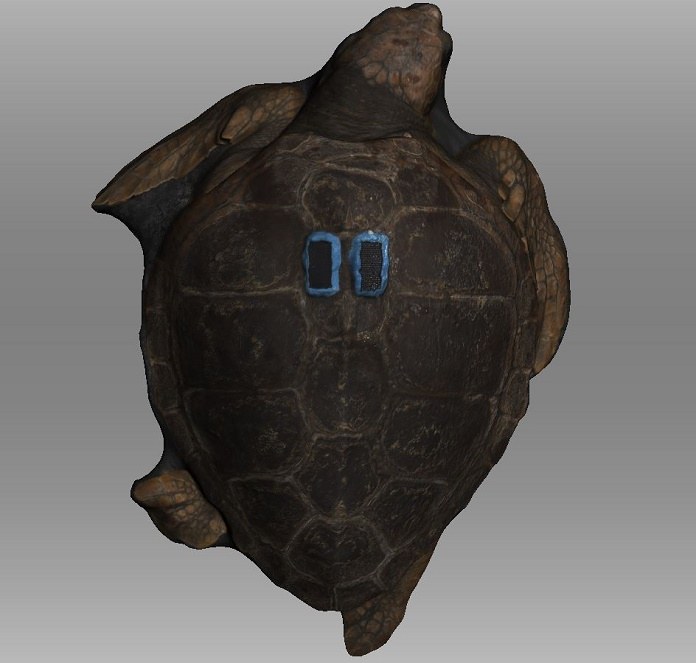A marine biology project led by students at the University of Swansea has used 3D scanners from award winning company Artec 3D to create full body 3D scans of dolphins, sharks, and large turtles. The 3D models produced enabled the design and customization of tags which gather data on the speed and activity levels of the animal, offering detailed information on migration patterns and the effects of ocean temperatures on their behavior.
Swansea University’s Lab for Animal Movement (SLAM) researches marine animal life using state-of-the-art tagging technology and leading data visualization techniques. This is done to understand more about the lives of marine animals in the depths of the ocean, even when they are out of sight.
Led by Lloyd Hopkins, a Ph.D student, SLAM have been focused on developing innovative methods for attaching these tags to various marine animals in a non-invasive, easy-to-use way. If the tags are too loose – they will be ineffective and might even fall off. Too tight and you will cause distress to the animal.
“Ethical development of tagging practices and techniques is an important benchmark, but new technologies that allow us to fully quantify and simulate a tag’s effect on an animal are often under-utilized or unexplored,” said Hopkins.

Leveraging Artect technology
To develop form-fitting attachments for the animals, it was important to first obtain accurate measurements of their unique shapes . The project used Artec’s most popular 3D scanner, Artec Eva, and combined it with Artec Studio 12 scanning and post-processing software. These scanners are capable of capturing wet, shiny and moving objects, which would be difficult for most 3D scanners.
Artec also produces its own Artec Studio data processing software (current version 14), designed to be used in tandem with its scanners. The Studio software platform uses high-powered algorithms to process 3D data without being restricted to an object’s size or resolution. Hopkins claims that without the use of this technology, much of the development phase of SLAM’s project would have to rely on sparse, estimated data that might not translate properly to a real-world application.
“We’re pretty confident here that use of 3D scanning techniques will be widely adopted as standard in the future for this type of research,” said Hopkins.
“Once we had decided on 3D scanning as a method, the Artec brand stood out quite quickly due to its usability, its functionality, and it’s fantastically powerful software that did most of the hard work for us.”

Conserving nature with 3D printing technology
Using Artec’s Eva scanner in combination with the portable Artec 3D battery pack, the SLAM team were able to scan animals both indoors and outdoors, including right next to the water.
The scan data was then used to build the design directly around the scanned animal using Autodesk Meshmixer and Fusion 360 CAD software. Using Autocad Fusion 360, Hopkins designed and built the tag around the scans, and rebuilt a fin from the gathered measurements. He then used Meshmixer to make changes to the mesh, e.g., smoothing over scan stitching lines and correcting difficult to scan areas such as the dolphin’s mouth.
The information gathered via 3D scanning was much more reliable and precise compared to records obtained the traditional way, by hand. This type of data capture is time-consuming, leaving room for error and it can make it harder to understand how these measurements fit together in space relative to the animal.

Though research for the project is still ongoing, 3D scans of the marine animals, particularly the dolphin 3D data, have already attracted the attention of trainers and vets in Spain.
Subscribe to the 3D Printing Industry newsletter and follow us on Facebook and Twitter for the latest news in additive manufacturing.
Visit our 3D Printing Jobs board to find new opportunities in your industry.
Featured image shows the Eva Artec scanner in use. Photo via Artec.



